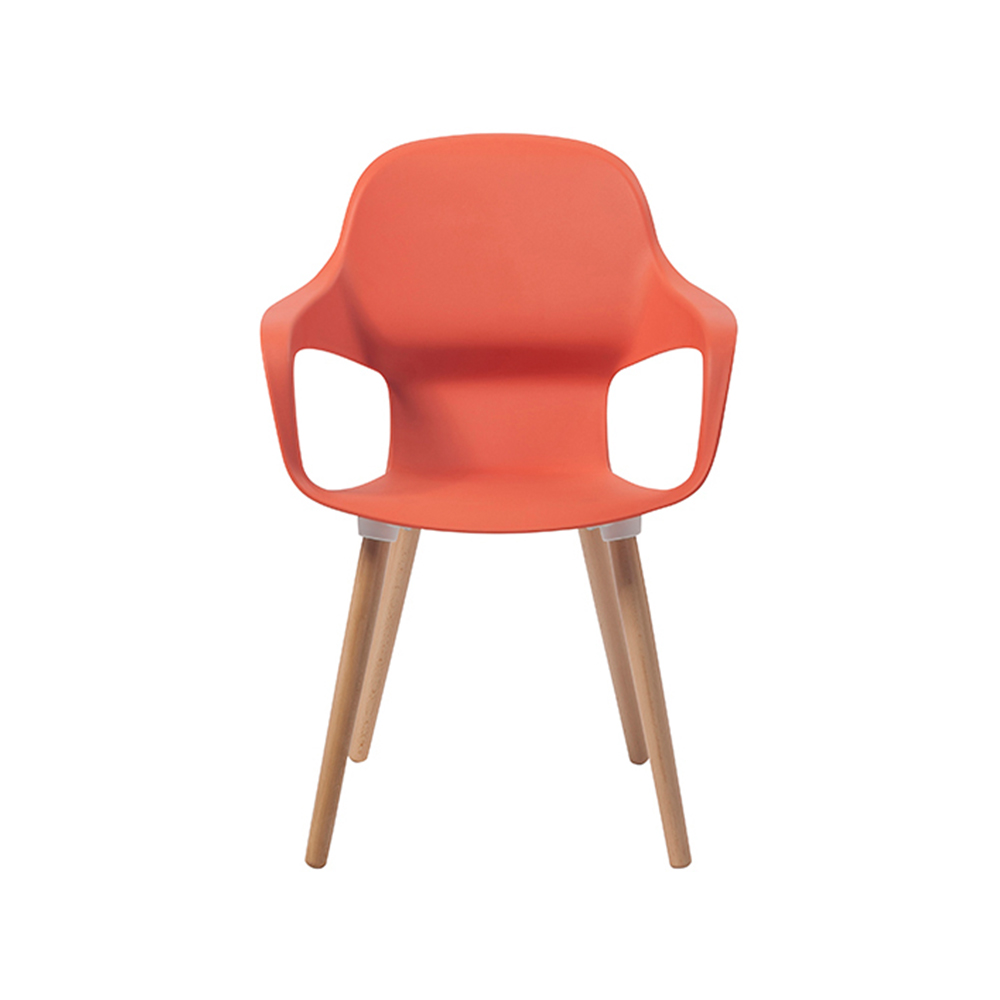+86-0572-5888031
In the design of a Dining Chair, what impact do the height and curvature of the back have on the user's comfort?
 2025.04.18
2025.04.18
 Industry News
Industry News
The height and curvature of the back of a dining chair have a very important impact on the comfort of the user, especially for long-term dining or gatherings. They are directly related to how the chair supports the back and maintains the body's natural posture, which affects the comfort and health during dining.
1. The impact of back height
Back height usually refers to the vertical distance from the seat to the top of the back of the dining chair. The height of the back affects how different parts of the back are supported, especially the waist and shoulders.
High-back dining chairs:
Support for the neck and upper back: High-back dining chairs can provide better support, especially in the upper back and neck areas. For those who need higher back support, especially those who sit for long periods of time, high-back dining chairs can effectively prevent back fatigue or discomfort and provide more comfort.
Suitable for long-term sitters: If family members often stay at the dining table for a long time, such as when holding family dinners or meetings, a higher back design can reduce the pressure on the upper body and avoid stiffness in the neck and shoulders.
Possible limitations: However, a back design that is too high may make some people feel restrained or oppressive, especially if the chair is designed to be too upright and may lack flexibility.
Low-back dining chairs:
More freedom of movement: Low-back dining chairs don't usually provide much support for the back, but they can provide more freedom of movement, which is suitable for shorter meals or relaxed dining environments. It makes people feel more relaxed and free, and is suitable for those who don't need too much back support.
Comfort during dining: If the meal time is short, a low-back chair may be more suitable. It does not restrict the range of motion of the neck and often makes the person sitting in the chair feel more relaxed.
2. The influence of the curvature of the back
The curvature of the back (also called the curve design of the backrest) is also important for comfort, especially for lumbar support.
Curved backrest (ergonomic curve):
Support for the waist: A backrest design with a curve or "curve" can effectively support the natural curve of the spine, especially the lumbar area (lower back). This design can reduce the pressure caused by improper sitting posture and relieve back discomfort and fatigue.

Comfortable sitting posture: When the back has a proper curve, it can better conform to the natural posture of the human body and avoid the back being in an excessively bent or stretched state for a long time. This maintains the comfort of the body and does not make you feel too tired even when sitting for a long time.
Support the spine: The design with a curved backrest not only focuses on the comfort of the back, but also helps maintain good spinal health and avoid excessive load on the spine.
Straight or flat backrest:
Suitable for short-term use: For those who only eat occasionally or quickly, the straight back design may not cause too much discomfort. However, if used for a long time, this design may cause pressure on the back and spine because it does not provide enough lumbar support and may make the sitter feel stiff and unnatural.
Lack of support: If the backrest design is not properly curved, it may not effectively support the natural curve of the waist, resulting in incorrect sitting posture and easily causing discomfort in the waist and back.
3. The combined effect of back height and curvature
Ergonomic design: When designing modern dining chairs, the height and curvature of the back are usually combined to conform to the natural form of the human body. The ideal design usually allows the curvature of the chair back to moderately conform to the S-curve of the spine, especially the curved part of the waist. This can effectively reduce the pressure on the waist and back and provide comfort when sitting for a long time.
Personalized needs: Different people have different body structures, so the height and curvature of the back will vary in comfort. Some people may need a higher backrest to support the upper back and neck, while others may prefer a lower, more flexible backrest design. For those who pursue ultimate comfort, you can choose a dining chair with adjustable back height and curvature to meet personalized needs.
The height and curvature of the back have a huge impact on the comfort of the dining chair. High-back chairs are suitable for those who need better neck and back support, while low-back chairs are more suitable for people who sit for short periods of time and provide free movement space. The curved backrest can provide better lumbar support, help maintain the natural curve of the spine, and reduce back fatigue; while the straight back design is simple, it lacks lumbar support and may not be comfortable enough for long-term use.
For family dining, it is crucial to choose a chair back height and curvature that suits your needs. I hope that the chair can provide comfortable support without making people feel restrained or uncomfortable.

 English
English عربى
عربى Español
Español 中文简体
中文简体















